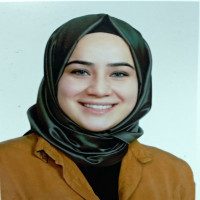Research Articles
Reviews
Issue Reviewers



 0000-0003-3677-9813
0000-0003-3677-9813


 0000-0002-7095-2758
0000-0002-7095-2758
Aim & Scope
Atlas University Journal of Medicine and Health Sciences aims to contribute to the medical literature by publishing original research, reviews evaluating current developments, invited manuscripts, case reports and letters to the editor in all fields of medicine and related fields including basic and clinical medicals sciences, dentistry and nursing.
Articles to be accepted into the journal consist of research, case reports, review (only with invitation) and letter to the editor. In addition, news from the medical world, ethics, and articles on medical history are also included. The articles are mainly on medicine and may be from a variety of health-related science fields such as: nursing, physiotherapy, nutrition, health education, health management, sports health, health economics, etc.
Author Guidelines
Atlas Journal of Medicine is the official publication of Atlas University and is published every four months, and a volume is completed with three issues in February, June and October. The journal aims to publish current, qualified and original studies related to the entire field of medicine.
Applications uploaded to the journal page are subject to preliminary evaluation by the journal editor or a field editor designated by the journal editor. During the pre-evaluation process, articles that are deemed appropriate are put into the evaluation phase, while articles that do not comply with the publication conditions may be sent back to the responsible author for correction, edited in format, or rejected. During the evaluation phase, the editor or field editor sends the manuscript to the consultants (reviewers) he/she deems appropriate for review. The reviewer process is carried out on a double-blind basis. When necessary, the responsible author may be asked to make corrections/edits in line with the opinions of the reviewers and editors. Requesting corrections from the author does not mean that the article will be published. These corrections must be completed and sent to the journal within 21 days at the latest. The corresponding author is informed whether the manuscript has been accepted or rejected.
Whether or not they are accepted for publication in the journal, files uploaded to the system are archived.
Open Access and Article Processing
Atlas Journal of Medicine provides open access to scientific publications. After determining the DOI number, the electronically published issue and the full texts of the articles in its content can be accessed free of charge.
No fee is charged from the author(s) for the publication of their articles.
Readers may download the journal content free of charge for academic or educational use. The magazine is free to everyone, at any time.
Copyright
Atlas Journal of Medicine allows articles to be shared in accordance with the Attribution-NonCommercial-NoDerivatives 4.0 International (CC BY-NC-ND 4.0) license. Accordingly, writers and readers; They may copy and reproduce the works provided that they comply with the conditions of citing appropriately, not using the material for commercial purposes, and informing them if changes have been made. No copyright is paid for articles published in the journal.
Written Language of the Journal
The written languages of the journal are Turkish and English. Articles written in Turkish are included with English "abstract" and "keywords", and articles written in English appear with Turkish "abstract" and "keywords". “Turkish abstract” and “Abstract” sections should be included as literal translations. Manuscripts written in English must be checked for spelling and grammar. Manuscripts deemed linguistically inadequate will not be evaluated.
Authorship Criteria
When uploading the article to the journal page, the Copyright Transfer Form, Author Contribution Form and Conflict of Interest Form must be filled in and signed by the corresponding author.
Atlas Journal of Medicine as agreed to implement the standards of the International Committee of Medical Journal Editors.
Ethical Responsibility
Atlas Journal of Medicine publishes articles that comply with ethical and scientific standards. The ethical, scientific and legal responsibility of the articles published in the journal belongs to the author(s) and do not reflect the opinions of the editor and editorial board members.
Ethics Committee Approval must be obtained for all prospective and necessary retrospective studies, including studies with experimental animals, and the date (day-month-year) of the Ethics Committee Approval along with the number of the Ethics Committee Approval must be stated in the "Material and Method" section of the manuscript. Since, in accordance with ethical and legal rules, in all articles where the privacy of the patient is required to be protected, identifying information and photographs of the patients cannot be printed without the written informed consent of the patient (or his legal guardian), the sentence "A written consent document has been received from the patient (or his legal guardian) stating that his medical data can be published" It must be stated in the "Materials and Methods" section (at the end of the Introduction section in articles without a Materials and Methods section). In studies conducted on animals, committee approval indicating compliance with international ethical rules must be obtained from the relevant animal ethics committee.
Manuscripts submitted for publication in the journal must not have been previously published or submitted for publication elsewhere. Studies previously presented at congresses must be stated in the Cover Letter sent to the Editor. If the article includes some of the topics in a previously published article of the author(s), this should be stated in the Cover Letter and a copy of the previous article should be uploaded to the journal page along with the new application files.
The names of people, institutions or organizations that do not meet the authorship criteria but contributed to the study can be included in the "Acknowledgments" section.
Conflict of interest: Authors are responsible for disclosing all personal and financial relationships that may be relevant to their work. Commercial products, medicines, companies, etc. used in the presence of an institution(s) that provide financial support for commercial connections or work. What kind of relationship you have with or whether you have any conflict of interest should be filled in the Conflict of Interest Form and uploaded to the system, and it should be stated in the text under the heading Conflict of Interest Declaration in the "Declarations" section.
Plagiarism screening: Atlas University Journal of Medicine and Health Sciences does not allow any plagiarism. For this reason, all articles sent to the journal are scanned via iThenticate by the journal administrator, and the similarity report is uploaded to the system so that the authors can also see it. Acceptable similarity rate is less than 20%. Manuscripts that are more similar than the specified ratio are returned to the author without being evaluated.
FONT TYPES
Articles can be sent electronically by logging into the system https://dergipark.org.tr/tr/journal/3968/submission/step/manuscript/new. Information about the sections that article types should contain is given under the heading "Preparation of the Article".
Research Article describes original studies that contain new information and have been conducted on current topics. These studies may be randomized controlled, observational, descriptive, diagnostic or treatment confirmatory, clinical, experimental or conducted with experimental animals. Excluding references, Abstract sections and Table/Figure explanations, the main text should not exceed 3000 words.
The Case Report should include a new finding or rare and interesting cases or conditions that may be important to the readers, and an approach to diagnosis or treatment. Maximum five authors are limited to 1000 words and 10 references, excluding the References list. It can only be supported by a table or a figure.
A Letter to the Editor can be written about published texts or professional topics, not exceeding 500 words and containing five references and a table or figure. In addition, the right to reply to letters related to texts previously published in the journal is given.
Review Articles are compilations written by experienced and competent authors, upon the invitation of the Editorial Board, containing comprehensive evaluations of specific topics in medicine. Review articles are also subjected to the journal's evaluation process. References should not exceed 5000 words, excluding table and figure captions. It is limited to a maximum of five authors and 80 sources.
PREPARATION OF THE ARTICLE
All articles sent to Atlas Journal of Medicine must be prepared in accordance with the following rules.
General format
a- The text should be written in Times New Roman 11 point font,
b- Page margins should be 2.5 cm,
c- Pages should be numbered from the upper right corner, starting from the title page, and line numbers should be added (Microsoft Office Word™ - Layout - Line numbers - Continuous)
d- Abbreviations should be written in round brackets, following the one written clearly in the text first, and the abbreviation should be used in the same way throughout the text. Abbreviations should be avoided in the Title and Abstract section, and care should be taken not to use unnecessary abbreviations in the text. Sentences should not start with abbreviations.
e- Units of all measurements must be written according to the metric system (International System of Units, SI). Example: mg/kg, µg/kg, mL/min, µL/h, mmHg, etc. Measurements and statistical data should be stated with numbers unless they are at the beginning of a sentence.
f- The statistical method applied, if any, should be stated in the Materials and Methods section.
g- Numbers that do not represent any unit and are less than 10 and numbers given at the beginning of the sentence should be written in words. Decimal numbers must be separated from whole numbers by a comma in Turkish texts and by a dot in English texts.
h- The relevant article must be prepared in sections defined according to the type of article.
Cover letter
Addressing the editor, the title of the article, the article type, a brief explanation summarizing why the relevant article should be published in Atlas Journal of Medicine, and the responsible author are stated, along with the name and surname of all authors, ORCID number, institution and contact information (phone, e-mail and postal addresses) should be written. It must contain a written statement that the article has not been previously published or submitted for publication elsewhere. Atlas Journal of Medicine does not accept to publish any article that has been previously published, accepted or is under evaluation, even if it is in another language. If the article includes some of the topics in a previously published article of the author(s), this should also be stated in the cover letter.
Manuscripts that have previously been presented as oral or poster presentations at a scientific meeting should be stated in the Cover Letter, including information about the meeting where the presentation was made (date, place, name of the meeting), and should be written as a note at the end of the Abstract section.
Main Text
The main text file in Microsoft Office Word™ format uploaded to the system should not contain the names and institutional information of the authors. The main text should consist of the following sections according to the type of text:
- Research Article: Turkish title, Abstract and Keywords / English title, Abstract and Keywords / Introduction / Materials and Methods / Findings / Discussion / Conclusion / Declarations (Conflict of Interest, Authorship Contribution, Ethics Committee Approval) / Acknowledgments (if any) / References / Tables (with titles and descriptions) / Figure Captions.
- Case Report: Turkish title, Abstract and Keywords / English title, Abstract and Keywords / Introduction / Case Report / Discussion / Conclusion / Declarations (Conflict of Interest, Authorship Contribution, Ethics Committee Approval) / Acknowledgments (if any) / References / Table ( with titles and explanations) / Figure Caption.
- Review: Turkish title, Abstract and Keywords / English title, Abstract and Keywords / Introduction / Materials and Methods / Findings / Discussion / Conclusion / Declarations (Conflict of Interest, Authorship Contribution, Ethics Committee Approval) / Acknowledgments (if any) / References / Tables (with titles and descriptions) / Figure Captions (if any).
Title of the article
It should be short, easy to understand and describe the content of the article, written in Turkish and English, without abbreviations.
Abstract
It should be written under the headings Turkish (Abstract) and English (Abstract). Research articles should consist of four sections: Aim, Materials and Methods, Results, Conclusion, and contain a maximum of 250 words. The purpose of the research, procedures performed, observational and analytical methods, main findings and main results should be stated. Reference numbers and abbreviations should not be used in the abstract whenever possible. Case Report abstracts should not be divided into sections and should not exceed 200 words. An abstract is not required for a Letter to the Editor.
Keywords
At the end of the Abstract section, under the heading Keywords, there should be at least three and at most five keywords that capture the main headings of the scientific article, written in accordance with Index Medicus Medical Subject Headings (MeSH). Care should be taken to select Turkish keywords from Turkish Science Terms (www.bilimterimleri.com).
Text
The text of the article should consist of the sections defined above, depending on the type of article.
References
“VANCOUVER” style should be used in the text and list writing of the sources. References should be numbered in Arabic numbers in the order in which they appear in the text, table descriptions and figure captions, within round brackets "()" before the period, at the end of the sentence or the name referred to in the sentence. If more than one reference number is specified, the numbers should be separated by a comma and a space. If there are more than two consecutive numbers, they should be written with a hyphen between the smallest and largest numbers. Examples: (2, 5, 7), (3-7).
In the references list, the issue and volume number of the journal cited must be written. When writing page numbers, only the changing digits of the starting and ending page numbers should be written. Examples: 45-8 instead of 45-48, 219-22 instead of 219-222.
References should be arranged in the language in which the article was taken and as seen in the examples below:
Articles in journals
Grignol VP, Agnese DM. Breast cancer genetics for the surgeon: an update on causes and testing options. J Am Coll Surg 2016;222(5):906–14.
Journal articles with 3 or more authors
Bay RA, Rose N, Barrett R, ve ark. Predicting responses to contemporary environmental change using evolutionary response architectures. American Naturalist 2017;189(5):463-473.
Online early (E-pub) article
Butterly SJ, Pillans P, Horn B, Miles R, Sturtevant J. Off-label use of rituximab in a tertiary Queensland hospital. Intern Med J doi: 10.1111/j.1445-5994.2009.01988.x
Book
Kocatepe K. 9 Ay 10 Gün Hamilelik Rehberi. İstanbul: Papatya Yayıncılık; 2006:137-40.
Book chapter
McEwen WK, Goodner IK. Secretion of tears and blinking. In: Davson H (ed). The Eye. Vol. 3, 2nd ed. New York: Academic Press; 1969:34-78.
Web article
Stolberg SG , Pear R. Wary centrists posing challenge in health care vote. New York Times [Çevrimiçi]. http://www.nytimes.com/2010/02/28/us/politics/28health.html. 27 Şubat 2010
Website
Asar R. Yönetim açısından insan doğası [internet]. Yönetsel; 2021 [Erişim tarihi: 26 Mart 2021]. Erişim adresi: https://yonetsel.com/yonetim-acisindan-insan-dogasi/
Tables
Tables should complement the text and should not contain repeated information within the text. They should be numbered and named with Arabic numbers according to the order in which they appear in the text (example: Table 1). A short and descriptive title following the table name should be written above the table. Abbreviations in the table should be explained immediately below the table.
Figures
All figures, pictures, graphics and photographs should be named "Figure" and added to the system as separate files (.jpg, .png, .tif, etc., with a resolution of at least 300 dpi). Figure files must be high definition and good quality. Figures should be numbered with Arabic numerals in parentheses according to their order of use in the text (example: Figure 1).
Figure Captions
Figure captions should be written double-spaced with Arabic numerals corresponding to the figures. When symbols, arrows or letters pointing to certain parts of the figure are used, these should be explained in the caption. When figures published elsewhere are used, the author must have permission, document this and indicate it in the subtitle.
Measurements and Abbreviations
It is explained under the heading "General format" in the preparation of the article section.
Documents to be uploaded in application
- Cover letter
- Main Text
- Conflict of Interest Form
- Copyright Transfer Form
- Author Contribution Form
- Figures (if any)
REVISIONS
When sending revision files of their articles, authors should mark the changes in the main text and additionally send their notes regarding the suggestions made by the referees from the "Response to Reviewers" file. In this file, each referee's comment should be followed by the author's response and the place where the changes were made in the article should also be stated. Revised articles must be sent to the journal within 21 days following the decision letter.
Ethical Principles and Publication Policy
Publication Policy
The Atlas University Journal of Medicine and Health Sciences is committed to upholding the highest ethical standards in publishing and adheres to established international guidelines. All individuals involved in the publication process—Editors, Reviewers, Authors, and Publishers—must comply with these ethical standards without exception. Every manuscript submitted to the journal undergoes evaluation through the iThenticate plagiarism detection software. Manuscripts exhibiting a similarity index greater than 20% will not be accepted for publication. The journal aligns with the World Medical Association's (WMA) Declaration of Helsinki – Ethical Principles for Medical Research Involving Human Subjects (2013) and the WMA Statement on Animal Use in Biomedical Research (2016), incorporating these ethical standards into its practices. Additionally, the journal follows the recommendations set forth by the International Committee of Medical Journal Editors (ICMJE) throughout its editorial processes.
For clinical and experimental research, drug trials, and certain case reports, authors must provide an Ethics Committee report in line with the aforementioned international standards. The manuscript must clearly state the name and approval number of the ethics committee involved. If necessary, the journal may request the Ethics Committee report or an equivalent official document from the authors. When reporting experimental studies involving human participants, the authors should include a statement confirming that informed consent was obtained after thoroughly explaining the procedures to the subjects. For studies involving animals, the article must detail the measures taken to minimize pain, suffering, and discomfort. It is the authors' responsibility to ensure the confidentiality of patients' identities. For any photographs that could reveal a patient's identity, signed consent from the patients or their legal representatives must be submitted.
The Editor or Editorial Board Member reserves the right to reject manuscripts that do not adhere to the journal's guidelines or editorial policies, to return them to the authors for revisions, or to edit them for formatting. The Editor or Editorial Board Member may also consult external experts for manuscript evaluations. A request for revisions does not guarantee publication. The authors retain full ethical, scientific, and legal responsibility for the articles published in the journal. Manuscript materials will not be returned to authors, regardless of whether they are accepted for publication. No royalties will be provided for articles published in the journal.
Ethical Principles
The Atlas Journal of Medicine is a peer-reviewed scientific publication that maintains rigorous ethical and editorial standards. There are no fees associated with submitting articles or other processes related to the journal, and all accepted articles are available for free reading and downloading. The journal adheres to the principles established by ICMJE (International Committee of Medical Journal Editors), BOAI (Budapest Open Access Initiative), and DOAJ (Directory of Open Access Journals). All editors, reviewers, authors, and journal staff must be familiar with and comply with the relevant ethical guidelines set by COPE.
Permission from the Ethics Committee or Institutional Review Board is mandatory for all studies involving human participants and test animals. Authors must upload any required documents and information related to studies needing ethics committee approval. Ethics committee approvals should be submitted in PDF or JPEG format (this is not required for case reports or review articles). In case reports, authors must include a statement confirming that informed consent was obtained. For studies necessitating ethics approval, details regarding the approval (committee name, date, and approval number) should be included in the Materials and Methods section as well as on the first or last page of the article. Additionally, the Materials and Methods section should contain a declaration stating that the study adhered to international guidelines.
Ethical Guidelines for Editors
• Editors should accept articles that contribute meaningfully to the journal’s focus areas.
• Editors must avoid any conflicts of interest related to accepted or rejected manuscripts.
• Editors hold the complete authority to accept or decline submissions.
• It is the responsibility of editors to maintain the confidentiality of both peer reviewers and authors.
• Only articles that will significantly advance the field should be considered for publication.
• If an error is identified, editors should facilitate its correction or retraction.
• Editors are tasked with managing the pre-review, peer review, editing, and publication processes in an efficient and timely manner.
• Editors should not appoint individuals who do not contribute to the journal as editorial board members or associate editors.
Ethical Guidelines for Authors
• Submissions must be original and based on thorough research.
• All individuals listed as authors or co-authors must have made significant contributions to the work. It is unethical to include individuals without academic contributions as authors or to rank authors based on non-scientific criteria such as title, age, or gender, irrespective of their contributions.
• For articles with multiple authors, the specific contributions of each author to various stages of the work should be clearly outlined.
• Articles must not be submitted to multiple journals simultaneously or have been previously submitted to another journal. If a manuscript is found to have been sent elsewhere, the publication process will be terminated.
• Authors submitting to the journal are assumed to have read and accepted its publication and writing guidelines, thereby committing to these standards.
• All citations and references must be complete and accurate.
• Plagiarism and falsification of data must be strictly avoided.
• The similarity index from plagiarism checks should not exceed 20% for the peer review process to commence.
• The corresponding author has the responsibility to inform the journal editor of any potential conflicts of interest.
Ethical Guidelines for Peer Reviewers
• Peer reviewers should recognize their vital role in ensuring the academic quality of articles submitted to the journal and engage in the review process with a commitment to enhancing scholarly standards.
• Reviewers should only accept to evaluate manuscripts in areas where they possess the necessary expertise. They must also respect the confidentiality of the blind peer review process and safeguard the details of the article at all times.
• After completing the review, any information regarding the manuscript should not be shared with anyone under any circumstances.
• Reviewers should focus solely on assessing the accuracy of the content and its conformity to academic standards. Personal disagreements with the article's arguments should not influence the review.
• Peer review reports must be objective and specific. Language that is defamatory, derogatory, or accusatory should be strictly avoided.
• Reviewers should refrain from making vague or unfounded statements in their evaluations. If the review leads to a negative outcome, a thorough explanation should be provided.
• Reviewers are expected to complete their evaluations within the designated timeframe. If they cannot fulfill the review, they should notify the journal promptly.
• Reviewers should identify any relevant published works that the authors have not cited. Any assertion that a particular observation, derivation, or argument has been previously documented must be accompanied by the appropriate citation. Reviewers should also inform the editor of any significant similarities or overlaps between the manuscript under review and other published works they are aware of.
Price Policy
No fee is charged to the author or his/her institution under any name. Article submission, evaluation and publication processes are free of charge.

